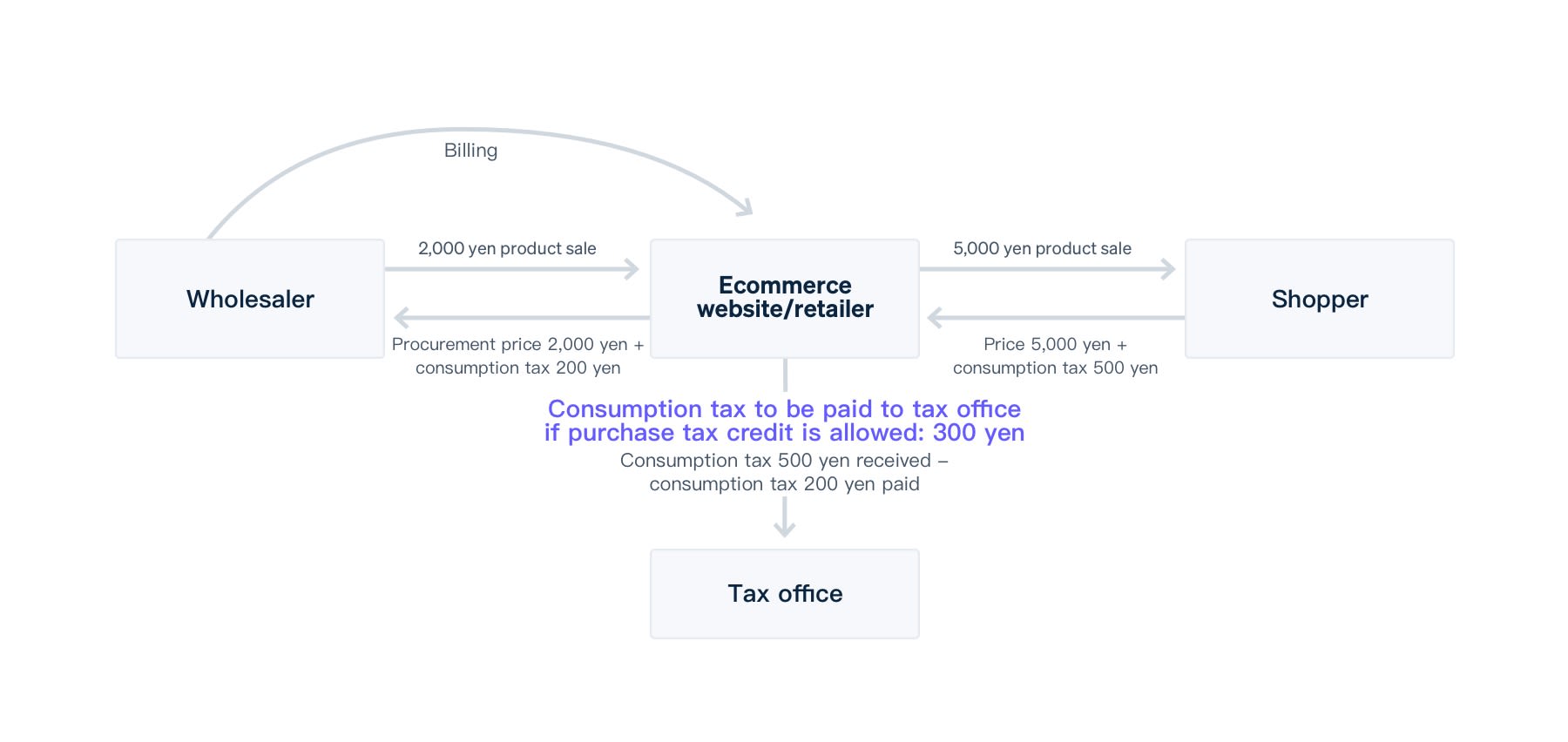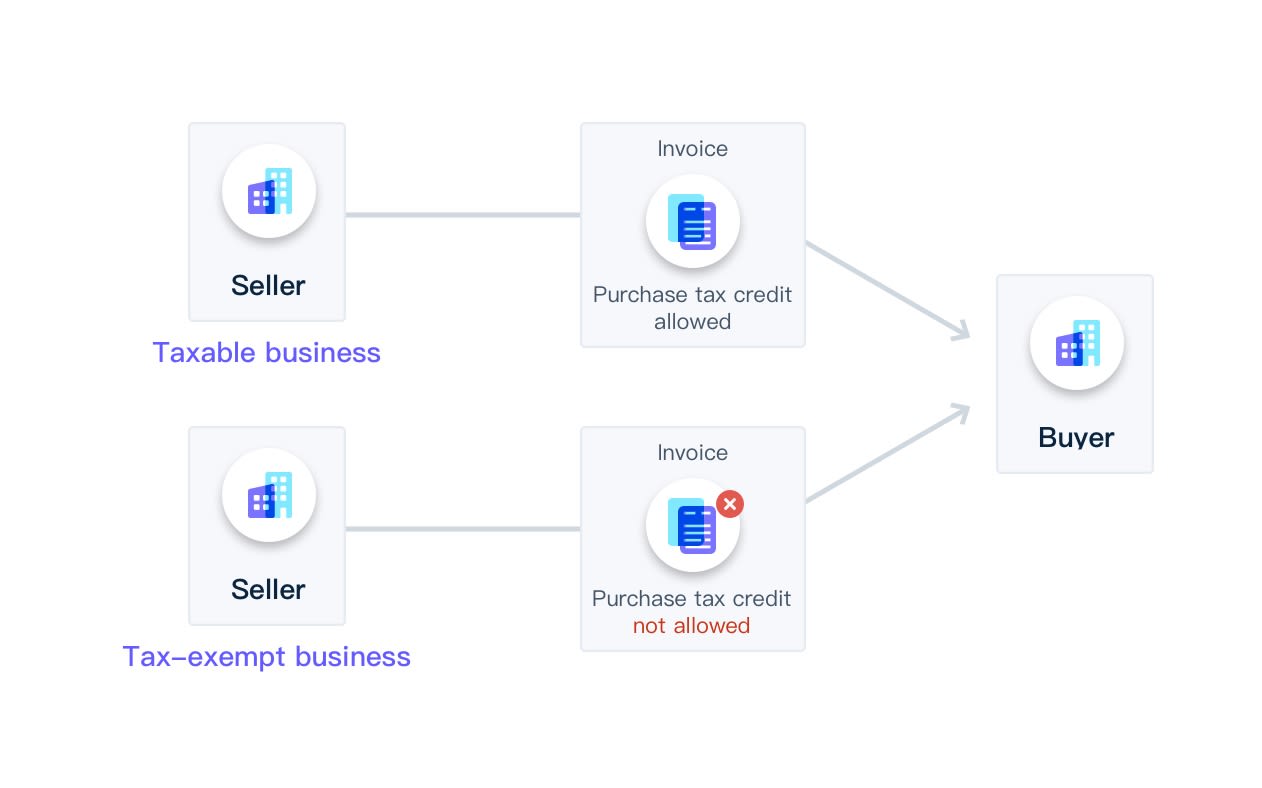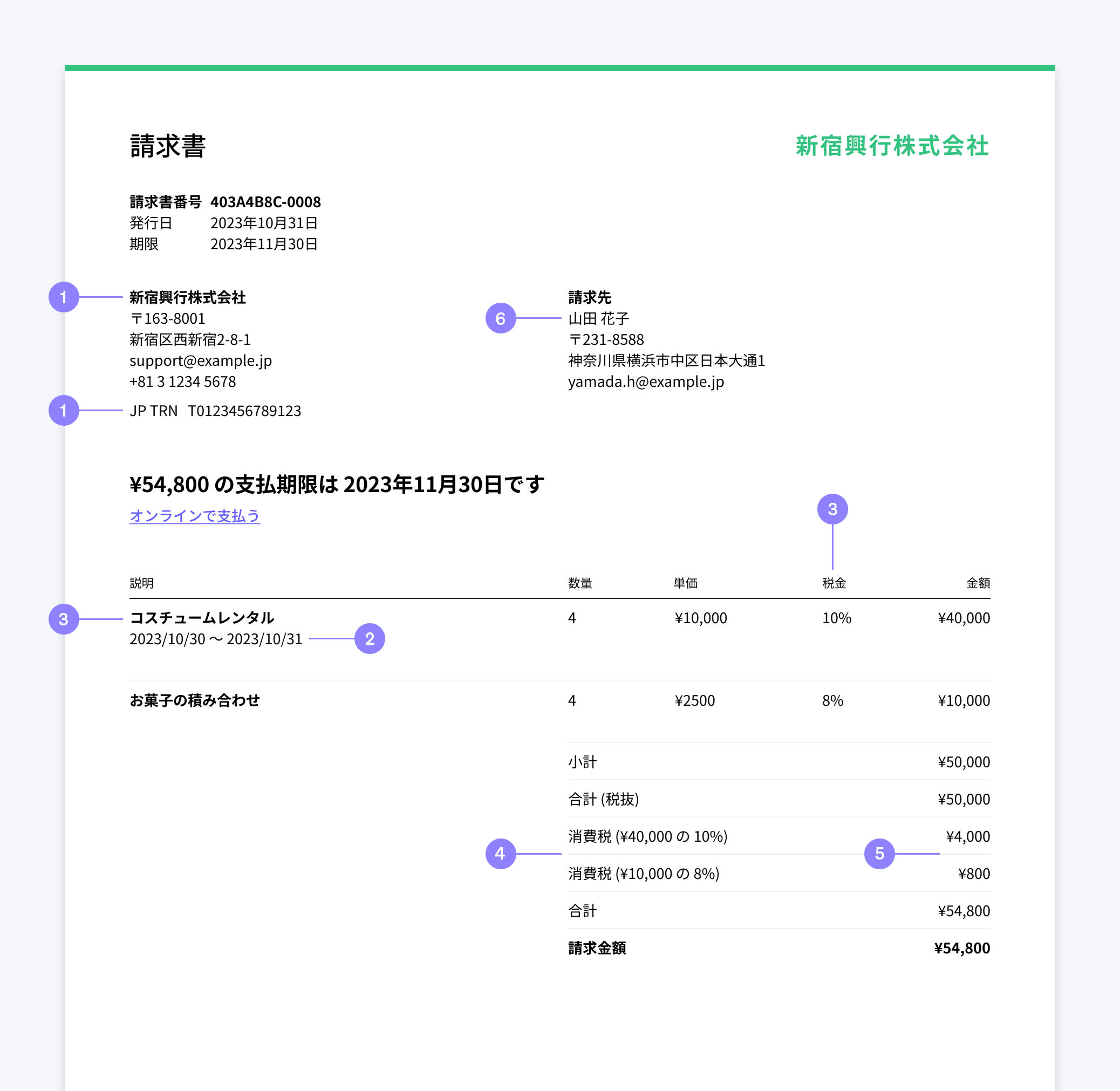With the introduction of a reduced tax-rate system in October 2019, and the enactment of the revised Electronic Record Retention Law in January 2022, the environment surrounding transactions has changed considerably. In the middle of this increasing complexity of accounting operations, the Tax Invoice Preservation System (also known as the “Invoice System”) was launched on 1 October 2023.
The Invoice System allows businesses that pay consumption tax to receive the appropriate purchase tax credit. The impact of this system is not limited to the seller’s side (those that receive the order and issue the invoice). Even on the buyer’s side (those that place the order and receive the invoice), there are some points that you should keep in mind.
This guide will give you an overview of the Invoice System, its impact on your business, and how Stripe can support your business to streamline operations.
What is the Invoice System?
The Tax Invoice Preservation System was launched 1 October 2023. The Tax Invoice Preservation System is commonly referred to as the “Invoice System,” and the purpose of this system is to allow businesses that pay consumption tax to receive the appropriate purchase tax credit by issuing and retaining “invoices (tax invoices)” that meet specific requirements.
The tax-invoice items and purchase tax credit will be discussed in the “Business impact of the Invoice System” section, whereas this section will cover the purpose of the Invoice System.
The background for the launch of the Invoice System is the Revised Consumption Tax Act that came into effect on 1 October 2019. As a result of the revision of this act, consumption tax was increased from 8% to 10%, and at the same time the reduced-tax-rate system was introduced. Consumption tax now involves a mix of two different tax rates: the standard tax rate (10%) and the reduced tax rate (8%). Sellers have to calculate consumption tax based on these two tax rates, and buyers might struggle to find out the exact tax amount, so it complicates the accounting process on both sides. In response to this situation, the Invoice System was implemented for the purposes of calculating accurate tax payments by recording the applicable tax rates separately.
A similar scheme has previously been adopted in the EU, where there are multiple rates of tax. In the EU, which is made up of lots of different European countries, the tax rate for VAT (value-added tax), which is the equivalent of consumption tax in Japan, varies not only from country to country, but also by the types of goods or services. Therefore, the Invoice System was set up to require the issuance and retention of electronic invoices with specific VAT information, in order to clarify tax rates to make it possible to receive tax credit.
Business impact of the Invoice System
What changed when the Invoice System launched on 1 October 2023?
The most important change is the requirement for the purchase tax credit. Using the Invoice System, a business operator registered as a tax invoice issuer issues an invoice (tax invoice) and retains it on the buyer side, so that the buyer can receive the appropriate purchase tax credit.
What is the purchase tax credit for consumption tax?
Before we go any further, let’s start by looking at the purchase tax credit.
The purchase tax credit refers to a tax payment calculated by subtracting “consumption tax paid at the time of purchase” from “consumption tax received from business partners or consumers, etc.,” when making payments that include consumption tax.
For example, imagine you run an e-commerce website that sells furniture and homeware. Let’s say you purchase a product for 2,200 yen including tax (purchase price: 2,000 yen + consumption tax: 200 yen) from a wholesaler, and then sell it to a customer on your ecommerce website for 5,500 yen including tax (purchase price: 5,000 yen + consumption tax: 500 yen). Consumption tax is incurred by consumers, who ultimately consume goods and services, and it is paid by businesses to the state. However, this does not mean that businesses pay the full amount of consumption tax received from the consumers.
In this example, the furniture and homeware retailer receives 500 yen from the consumer as consumption tax, but they pay 200 yen as consumption tax when they purchase the product from the wholesaler, which they subtract from the consumption tax they received. In other words, they make a tax payment of 300 yen (500 yen - 200 yen = 300 yen). This is how the purchase tax credit works.

Obligations of sellers and buyers under the Invoice System
With the launch of the Invoice System, tax invoices are required to be issued and retained to receive the purchase tax credit. As a result, the seller is, in principle, required by the buyer to issue a tax invoice, and the buyer must keep books and retain tax invoices, etc., in order to receive the purchase tax credit.
In the example above, both the wholesaler (the seller) and the furniture and homeware retailer (the buyer) will be impacted by the Invoice System. This is one of the key features of the Invoice System. Both the seller side (those that receive the order and issue the invoice) and the buyer side (those that place the order and receive the invoice) need to ascertain how to adapt to the system.

- Seller side: Issuing tax invoices on request from the buyer side
- Buyer side: Receiving and retaining tax invoices from the seller side, in principle, to meet the purchase-tax-credit requirements
Another important aspect of this system is that tax invoices can only be issued by tax invoice issuers. Conversely, unregistered business operators cannot issue tax invoices. In other words, if the seller is not registered, the buyer will not be able to receive a tax invoice and, in principle, will not be able to receive the purchase tax credit. As a result, there could be a greater tax burden on the buyer.
Invoice System: Action points
So what do you need to do?
There are three important points to be aware of when dealing with the Invoice System: “application for registration as an issuer of tax invoices, etc.,” “issuance of invoices (tax invoices) that are compliant with the specified requirements,” and “retention of invoices (tax invoices).”
(1) Application for registration as an issuer of tax invoices, etc.
The first step is to apply for registration as an issuer of tax invoices, etc.
Again, in order to issue tax invoices, you must be a registered issuer of tax invoices, etc. When applying, you fill out the registration application and submit it to the appropriate tax authority. Once the application has been approved, a 13-character registration number is generated, starting with a “T” (the following 12 characters will be the certificate of incorporation number on the company register), for the issuer of tax invoices, etc.
Please check the National Tax Agency website for the application procedures.
Even tax-exempt business operators, such as sole proprietors or freelancers, who have taxable sales of not more than 100 million yen and have been exempt from consumption tax payments until now, can still register as an issuer of tax invoices, etc. However, at the same time, this means that you will need to file consumption tax returns as a taxable enterprise, so you can expect an increase in tax and administrative burdens. Supporting measures, etc., have also been put in place, so if you are considering registration then please check the Ministry of Finance website: Is it true there are supporting measures for the Invoice System?
(2) Issuance of invoices (tax invoices) that are compliant with the requirements
In the Invoice System, the methods for retaining invoices, etc., has changed from the Categorized Invoice Preservation System to the Tax Invoice Preservation System, and additional information, such as registration number, applicable tax rate, and consumption tax classified by tax rate, was added to the requirements. It is necessary to add new items to invoices, change the layout, and prepare an accounting and invoice issuing and receipt system for this new system.
Retailers, restaurants, and taxi firms, etc., that operate for an unspecified number of customers may also issue a simplified version of a tax invoice: “Simplified Tax Invoice (Simple Invoice).” For more details, please refer to the National Tax Agency’s “Overview of the Tax Invoice Preservation System.”
This guide will detail the required information for tax invoices. Tax invoices require three items in addition to the regular item categories for the Invoice Preservation System.
Items required for the Tax Invoice Preservation System (with newly added items in bold):
(1) Name or title and registration number (13-character registration number starting with a “T”) of the tax invoice issuer
(2) Transaction date
(3) Transaction details (eligibility for reduced tax rate)
(4) Total amount classified by tax rate (either excluding or including tax) and the applicable tax rate
(5) Consumption tax classified by tax rate, etc.
(6) Name or title of the recipient of the document

In addition to tax invoices, you are also obliged to issue “refunded tax invoices” if goods are returned, or “modified tax invoices” if an issued invoice contains errors.
In addition to issuing tax invoices, it is also an obligation of issuers of tax invoices, etc., to retain a copy of an issued tax invoice.
(3) Retention of invoices (tax invoices)
As a requirement of the purchase tax credit in the Invoice System, “invoice retention” is one of the key points.
The seller must issue a tax invoice at the buyer’s request and retain a copy for a certain period of time. On the other side, the buyer is also obligated, in principle, to retain any received tax invoices for a certain period of time in order to receive the purchase tax credit. It is important to note that invoices received from sellers who are not registered as issuers of tax invoices, etc., cannot be used to receive the purchase tax credit. (Please refer to the National Tax Agency’s “Overview of the Tax Invoice Preservation System” for more details.)
Although we’ve narrowed down our explanation to three main points, it’s also necessary to take into account tasks required to make necessary confirmation checks, such as checking the registration status of business partners, confirming whether received tax invoices are filled out properly, and checking if the registration numbers are correct.
Invoice System, supported by Stripe
Stripe offers a payments platform equipped with all the features you need. With the introduction of the Invoice System, we are providing ways to help you simply and efficiently proceed with your invoicing on the Dashboard. We also support the retention of invoices using a method that is compliant with the revised Electronic Record Retention Law.
- Stripe Invoicing: Stripe Invoicing is a tool for the simple online creation and sending of invoices and for receiving prompt payment from buyers. Functions provided include invoice creation, change history retention, a safety feature to prevent accidental deletion of billed invoices, the ability to search by amounts or billing information, and more. We also support the creation of tax invoices. Using Stripe Invoicing allows you to complete changes to invoice information, as well as create and retain tax invoices, on the Dashboard.
- Stripe Tax: Stripe Tax is a tool to automate tax collection on your Stripe transactions. Stripe Tax always calculates and collects the correct amount of taxes. It supports hundreds of products and services and is up-to-date on tax rule and rate changes.
- Stripe Billing: Stripe Billing is a tool to easily manage subscriptions, recurring invoicing, and monthly billing. As with Stripe Invoicing, we support the creation of tax invoices, allowing for the creation and retention of tax invoices on the Dashboard.
- Easy to implement: With Stripe Invoicing and Stripe Billing, you can complete the process of creating, customising, and sending invoices within minutes from the Dashboard, using the invoices that Stripe provides online. It requires zero lines of code. Visit here to try out invoicing with Stripe.
- If you do not use Stripe Invoicing and want to use receipts as simplified invoice documents (適格簡易請求書), you can follow our guide.
Discover how to submit documents, when requested during a tax audit, and the requirements for being compliant with the Electronic Record Retention Law – even for electronic transactions other than invoices created and issued using Stripe.
For further information on set-up methods, refer to Best practices for setting up invoices in Japan.
Reference: National Tax Agency (website). “Electronic Transactions.” Accessed 26 May 2023. https://www.nta.go.jp/law/joho-zeikaishaku/sonota/jirei/tokusetsu/01.htm
Glossary
- Invoice (tax invoice): Invoices created by the seller to communicate the applicable tax rate and the exact tax amount to the buyer. These can be issued by registered tax invoice issuers only.
- Seller: In B2B transactions, a provider of goods or services for which orders have been received and for which invoices will be issued.
- Buyer: In B2B transactions, a recipient of goods or services and a recipient of invoices.
- Reduced-tax-rate system: A system, which was introduced on October 1, 2019, that set the tax on some products to be below the standard tax rate.
- Purchase tax credit: When paying consumption tax, this refers to a tax payment calculated by subtracting “consumption tax paid at the time of purchase” from “consumption tax received from business partners or consumers, etc.”
- Tax invoice issuers: A business operator who, after screening by the National Tax Agency, has obtained a registration number as a business operator deemed capable of issuing tax invoices (invoices).